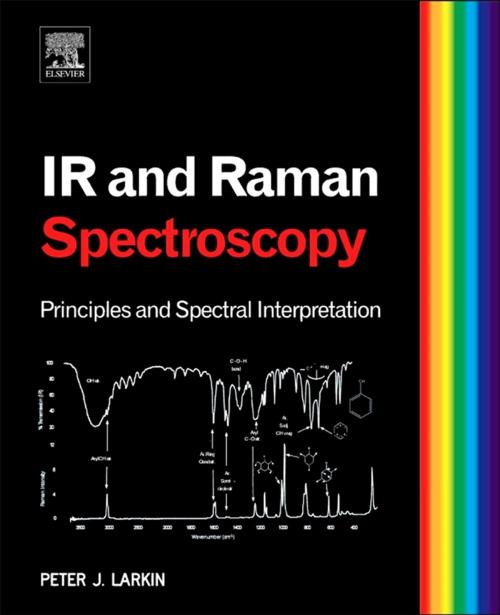Infrared and Raman Spectroscopy
Principles and Spectral Interpretation
Nonfiction, Science & Nature, Science, Chemistry, Analytic, Physical & Theoretical| Author: | Peter Larkin | ISBN: | 9780123870186 |
| Publisher: | Elsevier Science | Publication: | July 13, 2011 |
| Imprint: | Elsevier | Language: | English |
| Author: | Peter Larkin |
| ISBN: | 9780123870186 |
| Publisher: | Elsevier Science |
| Publication: | July 13, 2011 |
| Imprint: | Elsevier |
| Language: | English |
Infrared and Raman Spectroscopy: Principles and Spectral Interpretation explains the background, core principles and tests the readers understanding of the important techniques of Infrared and Raman Spectroscopy. These techniques are used by chemists, environmental scientists, forensic scientists etc to identify unknown chemicals. In the case of an organic chemist these tools are part of an armory of techniques that enable them to conclusively prove what compound they have made, which is essential for those being used in medical applications.
The book reviews basic principles, instrumentation, sampling methods, quantitative analysis, origin of group frequencies and qualitative interpretation using generalized Infrared (IR) and Raman spectra. An extensive use of graphics is used to describe the basic principles of vibrational spectroscopy and the origins of group frequencies, with over 100 fully interpreted FT-IR and FT-Raman spectra included and indexed to the relevant qualitative interpretation chapter. A final chapter with forty four unknown spectra and with a corresponding answer key is included to test the readers understanding. Tables of frequencies (peaks) for both infrared and Raman spectra are provided at key points in the book and will act as a useful reference resource for those involve interpreting spectra.
This book provides a solid introduction to vibrational spectroscopy with an emphasis placed upon developing critical interpretation skills. Ideal for those using and analyzing IR and Raman spectra in their laboratories as well as those using the techniques in the field.
- Uniquely integrates discussion of IR and Raman spectra
- Theory illustrated and explained with over 100 fully interpreted high quality FT-IR and FT-Raman spectra (4 cm-1 resolution)
- Selected problems at the end of chapters and 44 unknown IR and Raman spectra to test readers understanding (with a corresponding answer key)
Infrared and Raman Spectroscopy: Principles and Spectral Interpretation explains the background, core principles and tests the readers understanding of the important techniques of Infrared and Raman Spectroscopy. These techniques are used by chemists, environmental scientists, forensic scientists etc to identify unknown chemicals. In the case of an organic chemist these tools are part of an armory of techniques that enable them to conclusively prove what compound they have made, which is essential for those being used in medical applications.
The book reviews basic principles, instrumentation, sampling methods, quantitative analysis, origin of group frequencies and qualitative interpretation using generalized Infrared (IR) and Raman spectra. An extensive use of graphics is used to describe the basic principles of vibrational spectroscopy and the origins of group frequencies, with over 100 fully interpreted FT-IR and FT-Raman spectra included and indexed to the relevant qualitative interpretation chapter. A final chapter with forty four unknown spectra and with a corresponding answer key is included to test the readers understanding. Tables of frequencies (peaks) for both infrared and Raman spectra are provided at key points in the book and will act as a useful reference resource for those involve interpreting spectra.
This book provides a solid introduction to vibrational spectroscopy with an emphasis placed upon developing critical interpretation skills. Ideal for those using and analyzing IR and Raman spectra in their laboratories as well as those using the techniques in the field.
- Uniquely integrates discussion of IR and Raman spectra
- Theory illustrated and explained with over 100 fully interpreted high quality FT-IR and FT-Raman spectra (4 cm-1 resolution)
- Selected problems at the end of chapters and 44 unknown IR and Raman spectra to test readers understanding (with a corresponding answer key)















